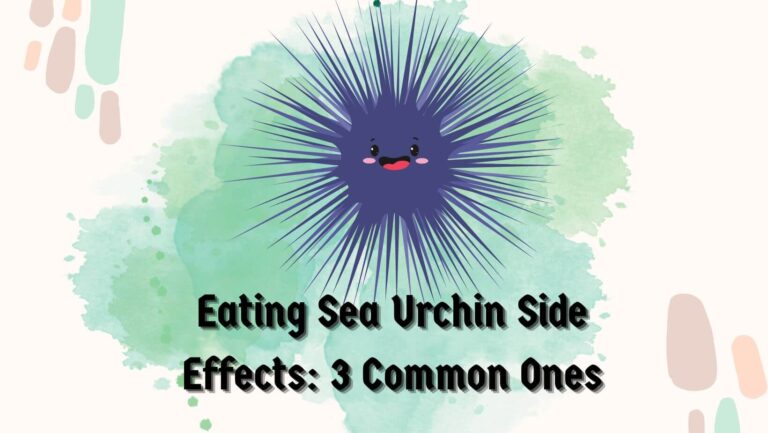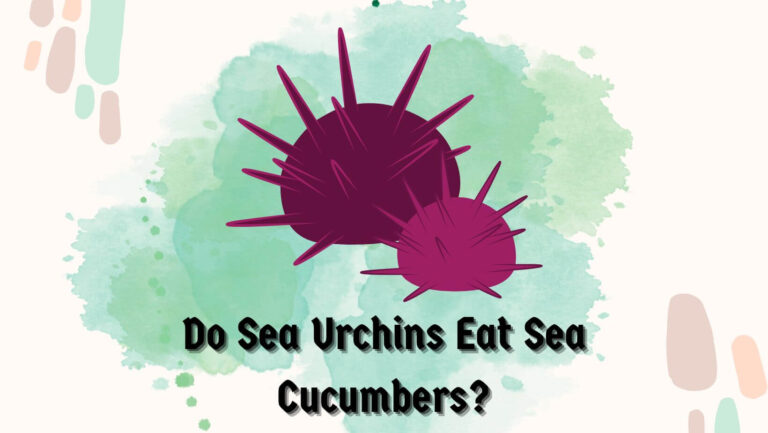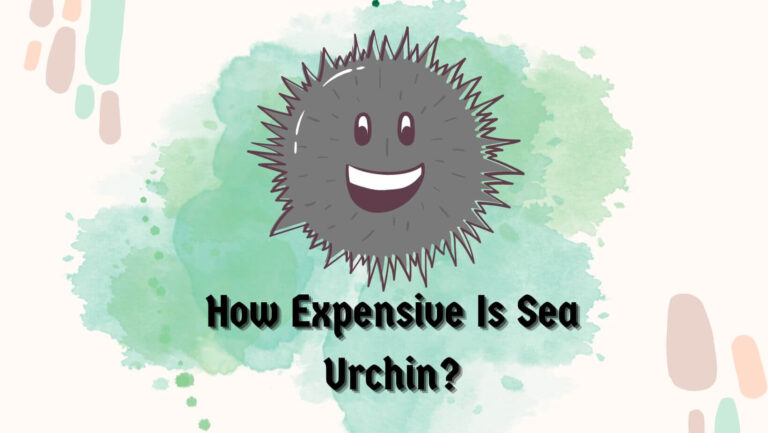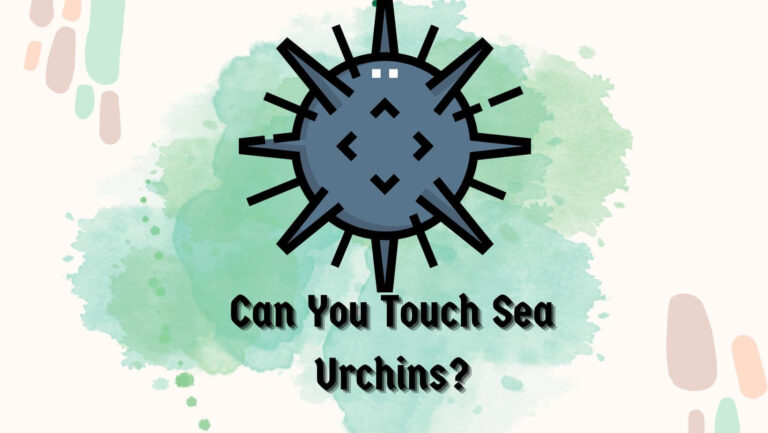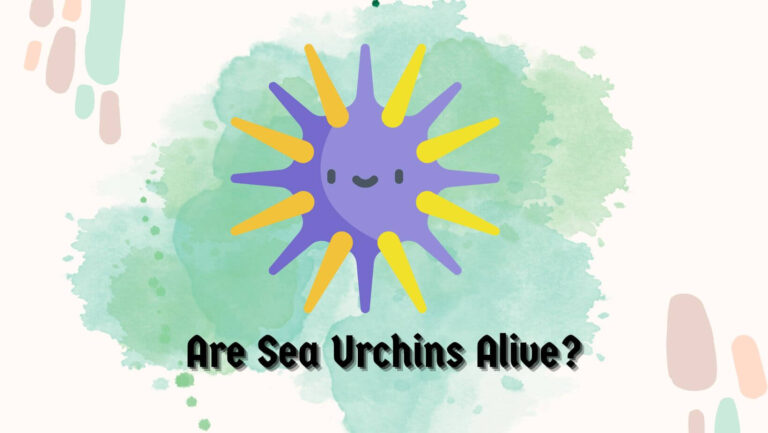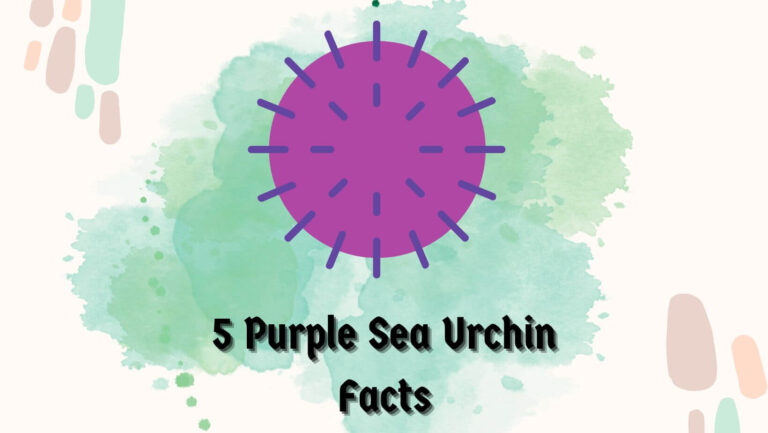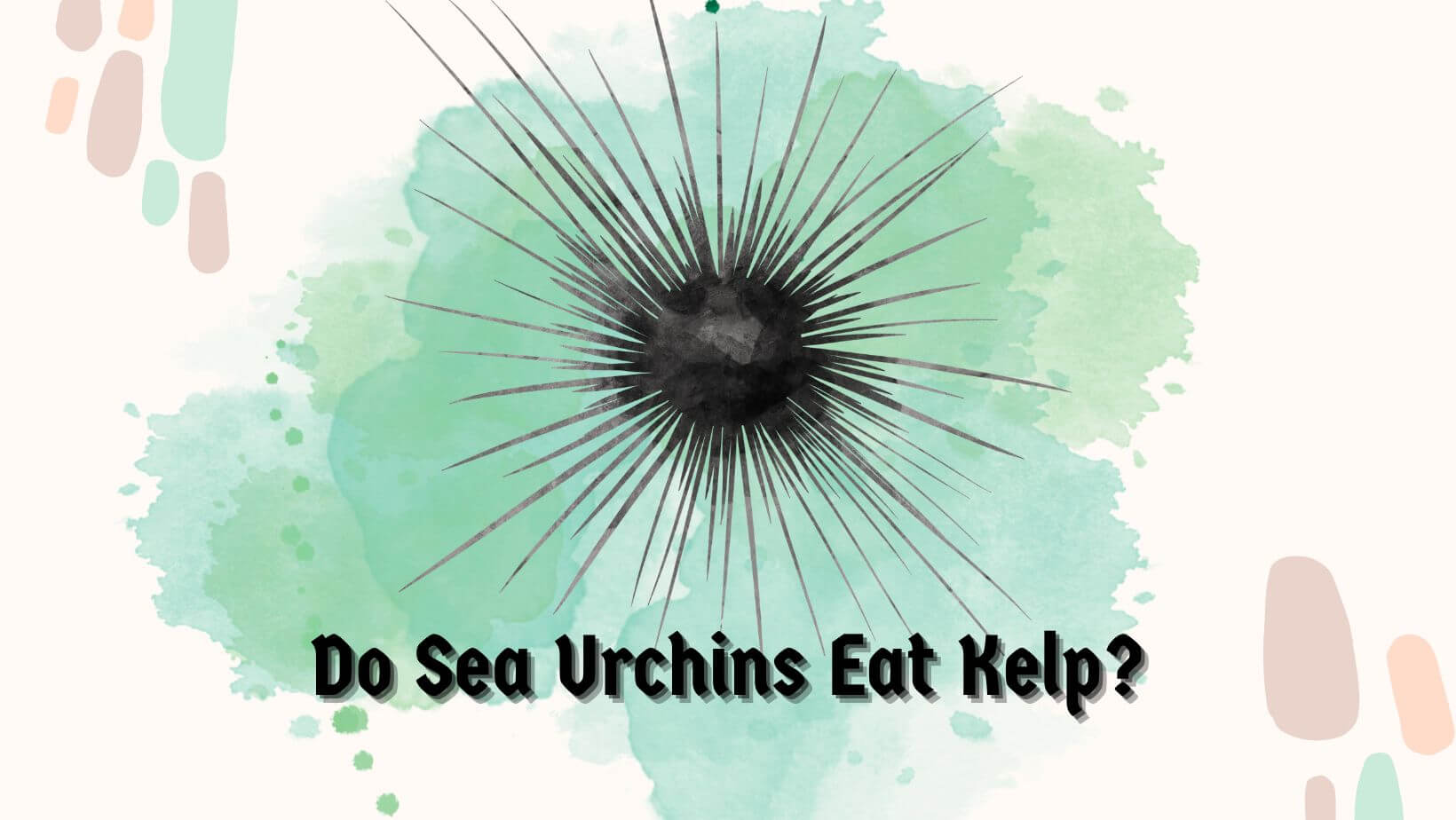
In the kelp forest, you can observe plenty of sea urchins here and there, which are quite common. Sea urchins are available worldwide and can be found in kelp forests, coral reefs, Rocky shores, seabeds, etc.
They’re spiny spherical creatures found worldwide. Conversely, Kelp is a large brown seaweed that forms underwater forests along the coastal region. Therefore, if you wonder, ‘Do Sea Urchins Eat Kelp?’ you’re not alone. Well, for the answer, yes.
But to what extent and how depends upon many factors. In this article, I am not only going to answer the question ‘Do sea urchins eat kelp’ but also tell you the intricate relationship between them, the factors that may influence the sea urchins’ feeding behavior, as well as the consequences it has on the Marine ecosystem.
Table of Contents
Do Sea Urchins Eat Kelp?
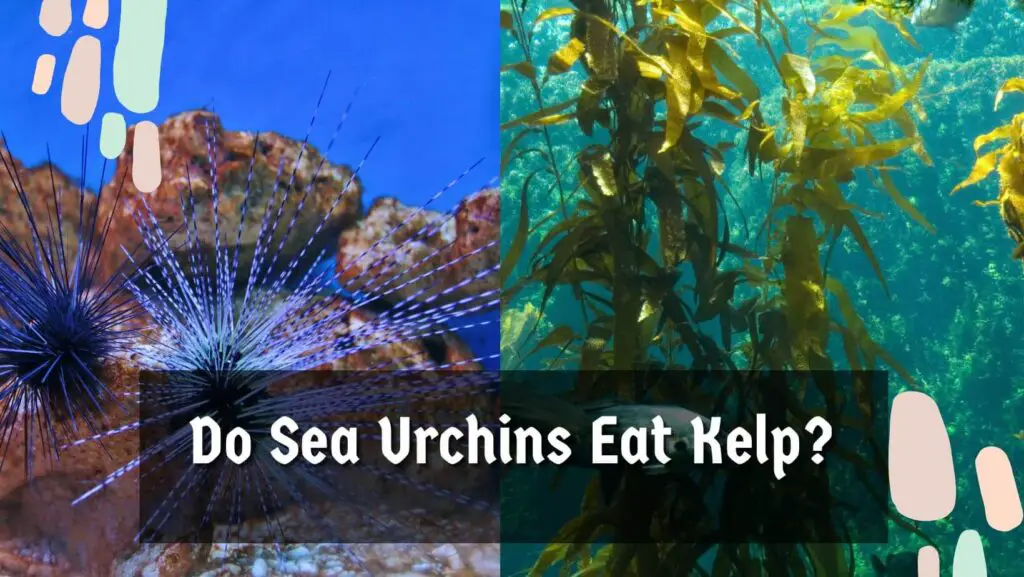
Yes, sea urchins eat Kelp. They are herbivorous and primarily graze on Marine vegetation. Their diet encompasses various algae species. And the consumption of Kelp will vary depending on sea urchin species and environmental conditions.
Species like purple sea chains consume Kelp as a significant part of their diet. You should know that sea urchins and Kelp share a very complex relationship. To know and understand the feeding habits of sea urchins, you will have to look deeper and examine their diet structure.
It is important to know that not all species eat Kelp to the same degree. In particular, purple sea urchins have frequently been noticed grazing on Kelp using their specialized mouth part called Aristotle lantern.
Aristotle’s Lanterns consist of complex teeth-like structures, helping them to scrape and devour kelp fronds. As I told you, some species eat other vegetation types as a major part of their daily diet.
On the other hand, many other factors can affect the degree of kelp consumption by sea urchins, like the availability of alternative food sources, the density of the sea urchin population, and the health of the ecosystem. All these will influence the sea urchin’s feeding behavior and the population of sea urchins in that particular region.
The Role of Kelp in the Sea Urchin Diet
However, you should note that Kelp is also known to hold significant nutritional value for sea urchins. It is rich in essential nutrients like carbohydrates, protein, vitamins, and minerals, which are much required for the livelihood & health of sea urchins.
The composition depends on its species and environmental factors, but it is generally considered a well-rounded nutritious option for sea urchins. In addition, the development and growth of sea urchins are also influenced by the consumption of Kelp.
The nutrients found in the Kelp contribute to their overall health, reproductive success, and survival. Many studies have shown that sea urchins fed with Kelp tend to exhibit faster growth rates & higher productive reproductive output than those without access to Kelp.
In addition, the interaction between the kelp and sea urchins also has broader ecological implications. For example, when the sea urchin population increases due to favorable conditions or the absence of a natural Predator, excessive grazing on Kelp occurs, further leading to destructive consequences.
You should know that overgrazing by sea urchins can deplete the kelp forest, destroying the delicate balance of the marine ecosystem. This, in turn, further affects other organisms that rely on forests for food, shelter, and habitat.
Feeding Behavior of Sea Urchins
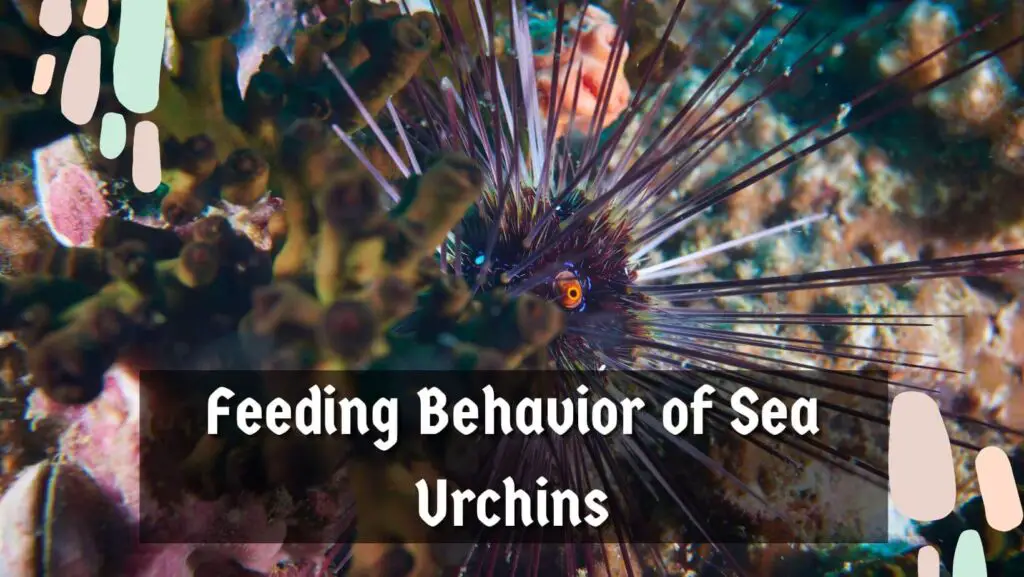
Grazing Habits of Sea Urchins
As I told you earlier, sea urchins are well known for their grazing habits which also play a crucial role in shaping the Marine ecosystem and vegetation. They are known to use their specialized mouth, also known as Aristotle lantern, to scrap and consume different types of marine vegetative vegetation, including care.
Sea urchins are known to be efficient grazers who continuously move and feed on algae and other food sources. You should note that they also share a broad diet, including different algae types. They particularly prefer certain species of sea urchins. Let’s take a look at them. They’re also helping the marine ecosystem in other ways as well, like helping in nutrient cycling, which I’ve covered indepth here: Are Sea Urchins Decomposers
Preferred Species of Kelp for Sea Urchins
Even though sea urchins tend to have a broad diet that includes different types of algae, there are few specific types of varieties that few species particularly prefer. For example, giant Kelp (Macrocystis pyrifera) is highly sought after by some species of sea urchins due to its high nutritional value and abundance in coastal regions.
On the other hand, different kelp species, like bull kelp (Nereocystis luetkeana) and feather boa kelp (Egregia menziesii), is also frequently consumed by sea urchins depending on their geographical location as well as availability.
Other Intriguing Topics To Discover
Factors Affecting Sea Urchin Feeding Preferences
What type of diet sea urchins consume also depends upon several factors like water temperature, availability of alternative food sources as well as the health of the ecosystem. You should also note that this sea urchin’s feeding behavior can also vary with seasonal change and water temperature fluctuation.
Additionally, other alternative food sources are limited or absent. In that case, sea urchins may have nothing but to consume more Kelp, which can lead to the degradation of forests. Therefore, we must understand these factors properly to predict and manage the sea urchin-kelp interaction.
Management Strategies for Sea Urchin-Kelp Interactions
Regulation & Control Measures for Sea Urchin Populations
It is important to maintain a balance between sea urchins and the Kelp ecosystem by managing the sea urchin population. Some regions have already implemented regulations and control measures to prevent sea urchin overgrazing and kelp forest restoration.
These types of measures may include fishing quotas, restrictions on harvesting sea urchins, and the implementation of marine protected areas to allow for the recovery & conservation of kelp forests and sea urchins.
Raising Awareness
We must raise awareness about the holistic understanding of the balance between sea urchins and the kelp ecosystem, which is crucial for effective management strategies. It’s time that we considered the ecological dynamics, the life influence of natural predators on the sea urchin population, and the resolution of kelp forest to grazing pressure.
We must understand the interconnectedness of these factors to make a well-informed decision to promote the sustainability of both sea species, as both are important for Marine ecosystems and life.
Strategies to Promote Sustainable Coexistence Between Sea Urchins and Kelp
If we ever want to foster a sustainable system between sea urchins and Kelp, there are also many strategies that we can employ. We can consider targeted research to understand better the factor influencing sea urchins’ behavior.
We can also work towards the development of ecosystem-based Management approaches and collaboration between scientists, policymakers, and local communities. If we implement this integrated management practice, we will definitely ensure the long-term viability of both species, sea urchins and Kelp, in their respective ecosystems for future generations.
Conclusion
In conclusion, sea urchins feed on Kelp, and their interaction with Kelp has profound ecological implications. You should know that sea urchins play a vital role as grazers and shape the good dynamic structures of the forests.
It also increases diversity by choosing a particular type of vegetation as well. After reading this article, I hope you know all the answers to the question: do sea urchins eat Kelp? After knowing so many things, if you find this informative and fun to read, consider sharing it.
Your share will help many people not only understand the relationship between sea urchins and Kelp but it will also provide them with an understanding of the overgrazing consequences in Marine ecosystems & life.
On this website, you can also find many other articles regarding sea urchins, like fun facts about sea urchins, side effects of eating sea urchins, benefits, and more. See you in the next article, till then, take care & goodbye.

